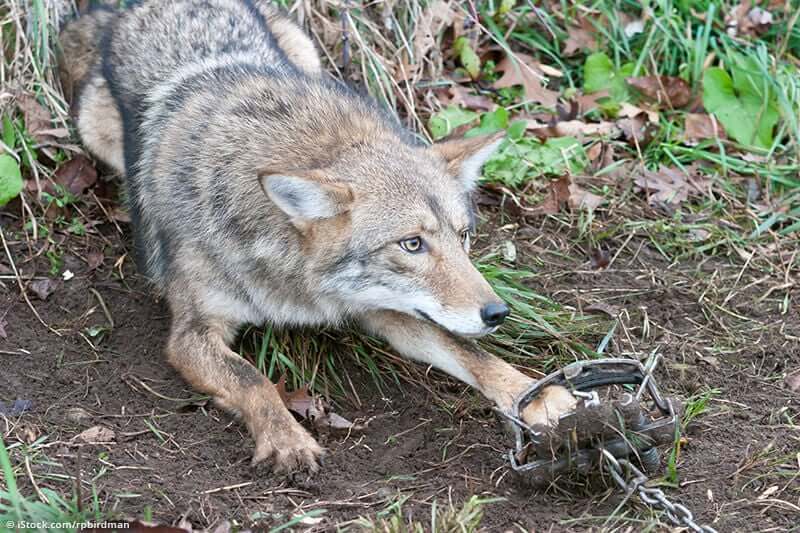
Trapping coyotes requires careful consideration of the right traps to use. Coyotes are cunning creatures, known for their intelligence and adaptability. To successfully trap them, you need to select traps that are effective, humane, and legal.
In this guide, we’ll explore the different types of traps available and how to choose the best ones for coyote trapping.
Understanding Coyote Behavior:
Before delving into the types of traps, it’s essential to understand coyote behavior. Coyotes are opportunistic predators that hunt for food primarily at night. They are known to be cautious and wary of new objects or changes in their environment. When selecting traps, it’s crucial to take into account their natural behavior and adaptability.
Types of Coyote Traps:
There are several types of Coyote traps commonly used for trapping, each with its advantages and disadvantages. Here are some of the most popular options:
- Leghold Traps: Leghold traps, also known as foot-hold traps, are one of the oldest and most traditional methods of trapping coyotes. These traps work by capturing the coyote’s foot when it steps on the trigger mechanism. Leghold traps come in various sizes and designs, including padded and laminated options to reduce the risk of injury to the animal.
- Conibear Traps: Conibear traps are designed to kill coyotes quickly and humanely by crushing their neck or chest. These traps consist of two metal jaws that snap shut when triggered by the coyote’s movement. Conibear traps are highly effective but require careful placement and handling to avoid accidentally catching non-target animals.
- Snare Traps: Snare traps are wire loops designed to tighten around the coyote’s neck or body when triggered. They are commonly used in conjunction with bait or scent attractants to lure the coyote into the trap. Snare traps are lightweight and portable, making them ideal for trapping in remote or hard-to-reach areas.
Choosing the Right Traps:
When choosing traps for coyote trapping, there are several factors to consider:
- Legal Considerations: Before setting traps, it’s essential to familiarize yourself with local regulations and laws regarding trapping. Some areas may have restrictions on the types of traps that can be used or specific guidelines for trap placement and handling.
- Target Species: While coyotes may be the primary target, it’s essential to consider the potential for catching non-target animals, such as pets or endangered species. Select traps that minimize the risk of accidentally trapping non-target animals, such as padded leg-hold traps or properly sized conibear traps.
- Trap Placement: Proper trap placement is critical for success in coyote trapping. Choose locations with evidence of coyote activity, such as tracks, scat, or animal carcasses. Avoid setting traps near human dwellings or areas frequented by domestic pets.
- Trap Maintenance: Regular maintenance and inspection of traps are essential to ensure they remain effective and humane. Check traps frequently for captures and reset them as needed. Clean and lubricate traps to prevent rust and corrosion, which can impair their function.
Conclusion:
Trapping coyotes requires careful consideration of the right traps and techniques. By understanding coyote behavior and selecting traps that are effective, humane, and legal, you can increase your chances of success while minimizing the risk of harm to non-target animals.
Remember to always follow local regulations and guidelines for trapping and prioritize the ethical treatment of wildlife. With the right traps and methods, you can effectively manage coyote populations while preserving the balance of ecosystems.





More Stories
Transforming Spaces: The Power of Commercial Concrete Polishing
A Most Pimped Cruise! – How I Discovered to Adore Extended Traces, Open up My Wallet & Get With the Method
6 Travel Suggestions Absolutely everyone Should Know